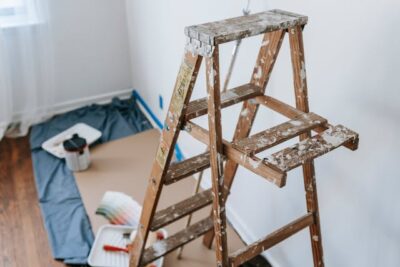Drywall, the gypsum plaster between sheets of thick paper, is integral to modern construction projects. It facilitates rapid and cost-effective building of walls and ceilings. Nowadays, drywall can also offer insulation from sound and mold, with the construction sector continuing to research further innovations.
Despite technological advancements, drywall repair is one of those chores that recur frequently when you own a house. For one, older drywalls may not be resistant to mold or adverse events, like fire. They can also get damaged in cities with inclement weather. After all, moisture doesn’t get along well with several home components, from paint to roofing.
Since drywall damage may happen fairly often, homeowners may tend to it themselves without seeking professional help. It can seem more cost-effective and avoid the hassle of scheduling visits with a professional. However, drywall repair can be more complicated than it first appears.
1. Not Accounting for Joint Compound Shrinkage
Joint compound, essentially gypsum, is integral to drywall repair, fixing holes and making things new again. Typically, one needs multiple layers of the compound, depending on the extent of damage. It must adhere adequately and be smooth. The process does not seem complex on paper, but it is one of the easiest to get wrong.
Some people may rush the project and not allow ample drying time. Moreover, the recommended drying time may need some tweaks based on your weather forecast.
Unpredictable weather events have become frequent in our warming world. For example, last year, Hurricane Milton brought hurricane-force winds and floods in Spring Hill, Florida. The impact on the ambient temperature and humidity levels was considerable.
Joint compounds can have varying drying times, from five to 90 minutes. Since it always shrinks when it dries, it can seem like you’re racing against time. Some Redditors who have attempted these projects before note that shrinking while drying often exposes the flaw [r/drywall]. Add to that insufficient accounting for environmental conditions, and you can expect frustrating results.
In some situations, a DIY job can be more expensive than entrusting it to professional handyman services in the beginning. It is because professionals will also need time to undo the damage and blend in a textured match.
According to Mr Level Head, homeowners can benefit from receiving a written estimate without obligation at the outset. It allows them to weigh the value for their money while factoring in other parameters, like flexible scheduling and satisfaction with the results.
2. Not Using Drywall Anchors Correctly
In a DIY age, drywall anchors are highly popular. They let homeowners (and renters) hang pictures or other decorative elements securely. Anchors are essential, as nails or screws are inadequate for drywall. They won’t provide the necessary reinforcement.
The problem is a tendency to use more drywall anchors than recommended because we want to be extra sure. Although they come with weight ratings, some people may find it tough to trust them. So, they use eight anchors where only four were necessary, making too many additional holes. Eventually, these holes will need to be fixed.
Another concern is not using the correct anchor for the object. For example, heavier items, such as cabinets, need different anchors than lighter ones, like paintings. You can use plastic ribbed anchors for a small framed poster, but you will need self-drilling and expansion anchors for bulky objects. Toggle and Molly bolts can also hold 50 to 75 pounds.
If your drywall is in bad shape due to improperly used anchors over the years, a professional consultation can help. Some of the best home repair websites offer comprehensive information on their customized services, payment plans, and timelines.
3. Sanding Too Aggressively, or Too Little
Sanding is another essential aspect of drywall repair, necessary to produce a uniform and consistent finish. It is also something people often get wrong, either by doing it too much or too little.
The standard approach is using sandpaper, a sanding block, and a knife. The challenge is finding the degree of sanding that is just right: you don’t want an uneven surface, but you mustn’t gouge it either. The odds of getting it wrong are worse when you use the incorrect grit-size sandpaper.
Many mechanical sanders are now available, complete with triangular attachments and speed controls. Some even have dust collection bags to reduce the mess and shoulder straps to keep you comfortable.
Enthusiastic (and experienced) homeowners may acquire one of these to obtain excellent results. However, they must weigh the investment carefully, considering how often they are likely to undertake the project.
Handling Drywall Repair With More Responsibility
DIY-driven or professional-led, home maintenance projects must be responsible in these times of increasing waste and resource scarcity. Incidentally, drywall comprises 9% of the construction waste in the US. Tons of this material enter landfills every year.
It hardly makes sense to waste more of it than is essential, which happens when unintended mistakes ruin a home’s foundation.
Instead, directing research into using drywall waste constructively is the innovation the world could do with. Recently, researchers from Washington State University were recognized for their work in employing drywall waste to build
tiny homes in Seattle.
Eco drywall is also becoming a possibility, with more research being conducted on sustainable construction options. Figuring out new opportunities for extending the end-of-life use of drywall can promote a circular economy. Professionals in this sector should stay abreast of these advancements to provide optimal and sustainable services to their customers.
Ultimately, homeowners should proceed with caution in such projects and avoid taking them at face value. YouTube tutorials have a way of glossing over the real-world challenges; the on-ground realities are often far messier.












